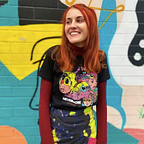How Chance The Rapper Is Leading A Chicago Hip-Hop Renaissance
Look past the headlines about gun violence and you’ll find a group of artists changing the world.
It’s a Wednesday night and Chicago’s dive gem Tonic Room is packed with a young diverse crowd for Stix Jam Night. Comedian Hannibal Buress chats with locals by the bar while Greg Landfair Jr., Chance the Rapper’s drummer and creator of Jam Night, runs around greeting others. Starry-eyed musicians rotate on-and-off stage playing with members of the Grammy-nominated Social Experiment. Here, it’s not about who you are or who you know—it’s about the music.
If you look past the headlines about blistering cold temperatures and gun violence, you’ll find a group of Chicagoans who care about giving back to the next generation of talent. Artists like Chance the Rapper and his band the Social Experiment are proving that, despite its national reputation, this is a collaborative city.
In a YouTube video from 2011, a then-unknown Chance the Rapper performs in front of a wall that reads “your art is your identity” at the Harold Washington Library’s YOUmedia Center. Three mixtapes and seven Grammy nods later, he’s now a hip hop revolutionary. Instead of leaving 79th Street and signing with a major label, he continues to lead open mics in front of that same wall.
For rappers like Chance, the YOUMedia Center is a safe space to hone their craft. Led by late poet, activist and mentor Brother Mike, artists like Noname, Malcolm London and Vic Mensa gained notoriety there. Kemdah Stroud, Chief Executive Officer of artist platform Prime Fortune, watched several of her friends find their voices at these open mic sessions. “Brother Mike passed down the torch to Chance and this generation of artists and now they’re doing good by helping others,” she says.
Giving back is a major part of Chicago’s thriving hip hop community. Along with programs like Young Chicago Authors, Landfair Jr. leads Stix Jam Nights several times a year, putting artists and musicians in the same room.
“Everybody’s getting along, there’s not as much hate,” Landfair Jr. says. “It’s becoming more about the music now and everybody’s collaborating and cheering each other on. Everybody is seeing now that if you stay [in Chicago], make a change and connect with people, that’s how you make things happen.”
Chicago has gone through many phases in music. Twista’s fast flow defined ’90s chopper style, while Common preached social reform in his lyrics. When the early ’00s came along, Kanye West spearheaded “chipmunk soul,” defined by sampling loops of old vinyl. While many veteran Chicago artists were inspired by the city, they were forced to move east or west after signing to labels. But in 2011, Chief Keef fronted a new movement in Chicago without leaving the South Side.
Keef pioneered the drill scene, defined by aggressive trap beats and graphic lyrics related to Chicago’s crime problem. Eventually, it scored him a major record deal with Interscope.
“There would be no Chance if it weren’t for Chief Keef,” Michael Kolar, founder of Soundscape Studios and independent label Closed Sessions says. Kolar has watched several generations of Chicago artists ascend to the spotlight, from The Smashing Pumpkins to Kids These Days, Keef and Chance the Rapper.
“All these artists tried [to stay in Chicago], like young Kanye and Lupe Fiasco always wanted that situation but couldn’t achieve it,” Kolar says. “Keef opened the floodgates by getting everyone checking for Chicago and getting every A&R coming here.”
Chance’s efforts to re-brand Chicago shone through in his third mixtape, “Coloring Book.” Along with big names like Bieber and West, Chance enlisted fellow Chicago rappers Saba and Noname, producer Knox Fortune and his band the Social Experiment. The vibrant album cover was designed by Chicago artist Brandon Breaux, who also made the rapper’s last two mixtape covers. When Chance and the Social Experiment are on tour, they sport local designers, like Emma McKee’s cross-stitched patterns or Olivia Goodman’s OG. brand — proving that music and culture are interdependent.
“Music is a reflection of culture and society, [and it] definitely builds the culture as well,” Stroud says. “Understanding the power that artists and musicians have on shaping the tendencies of society gives them the opportunity to create for the good of all, and is something uniquely powerful. We see Chance the Rapper, Vic Mensa, Malcolm London and so many artists in Chicago really valuing their voice and using it to create a more active future.”
What’s motivating Chance, Mensa and the Social Experiment isn’t necessarily fame or multi-million dollar contracts. It’s laying the groundwork for future generations of local artists. Landfair Jr. says he plans on giving free drum lessons to inner-city kids, while Chance continues to host open mics and events with his non-profit, Social Works. Stroud vows Prime Fortune will partner with more organizations across Chicago, much like they did for Chance’s voting effort, Parade to the Polls.
Chance has even challenged the industry by refusing to sign to a label, turning down an offer from his mentor, collaborator and friend Kanye West. By doing so, he’s giving freedom to artists by showing them it’s possible to make music wherever as an independent artist.
So while “your art is your identity,” it’s also a community effort, shared with the culture it was inspired from. By sticking to their core values and beliefs, Chicago artists are creating a breeding ground not just for the city’s artists to thrive, but hip hop as a whole. This entire genre is dependent on artists supporting one another.
